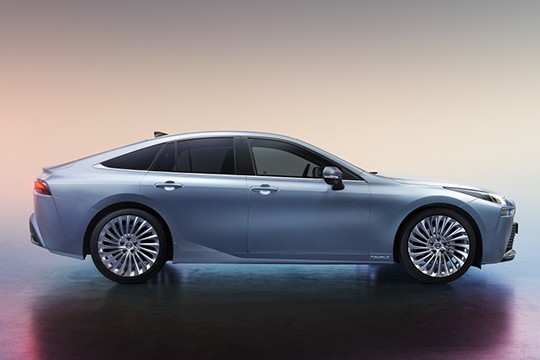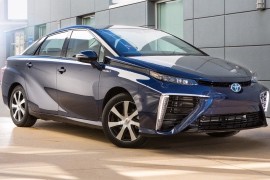TOYOTA Mirai Models/Series Timeline, Specifications & Photos
First production year: 2015
Engines: Hybrid, Electric
Body style: Hatchback
Toyota pushed the pedal to the metal and accelerated its development process for a complete transition away from fossil fuels. The 2021 Mirai was a good example.
The idea of fuel-cell wasn't new, and it was tried and tested by many carmakers such as Mercedes-Benz, BMW, or Honda. Toyota developed a platform to be used for various propulsion systems, from hybrid to electric or fuel-cell vehicles. The 2021 Mirai was the last addition and confirmed that Toyota would bring that water-powered vehicle sooner than expected.
Since it needed more tanks to store the hydrogen, Toyota used an extended wheelbase version of the Mirai platform to increase the storage capacity. Thus, the car could take up to 5.6 kg (12.3 lbs) of hydrogen, enough for up to 650 km (404 miles). But Toyota designers managed to shape the car in a fastback style, so, at a glance, it didn't look that long. The front fascia featured an impressive lower grille with horizontal lines, while on its upper side, the LED headlights with enclosed daytime running lights mimicked an angry, aggressive face.
Inside, a fully digital instrument cluster was continued with a complete infotainment display placed on top of the center stack. The expansive center console hid one of the five hydrogen tanks. Toyota designed the interior for five adult passengers, but the broad and tall center tunnel didn't leave too much room for the middle passenger.
In their quest for finding the best alternative fuels, Toyota launched the Mirai in 2014 at the Los Angeles Auto Show. The car showed was very fuel-efficient and
Toyota was responsible for the Prius and the hybrid fever that followed, even though it wasn't the first hybrid car on the market. It was like Tesla, which made the electric cars counts even if it was not the first electric car on sale. The Mirai was not the first fuel-cell vehicle on the market, but it was a serious offer for ecologic transportation.
The futuristic look of the vehicle for the time when it was launched might have been compared with the futuristic look of the Prius when it was launched. Sleek, aerodynamic, and curvy shapes, the Mirai had a different look than any other car of its class on the market.
Inside the car there was a futuristic approach, with exposed carbon-fiber materials and displays for the instrument cluster and for the infotainment unit. Even the climate-control unit was with a touch-screen display.
The technology behind it was overwhelming. First, there was the security for the hydrogen tanks. They were bullet-proof. In order to be punctured, they had to be hit twice in the same spot by a .50 caliber bullet. The hydrogen stored in the tanks was mixed with oxygen into a fuel-cell and the result was electricity that power the car and water that goes away. The system was so clean that the water can actually be drink. Another important advantage of the vehicle was that it could have been filled-up in 5 minutes and that was something that an electric car could not do. The only problem was that the filling stations were rare and only in California and Hawaii.

